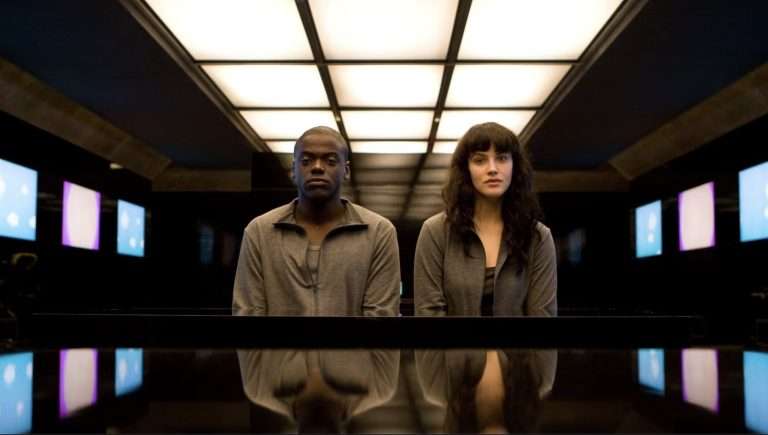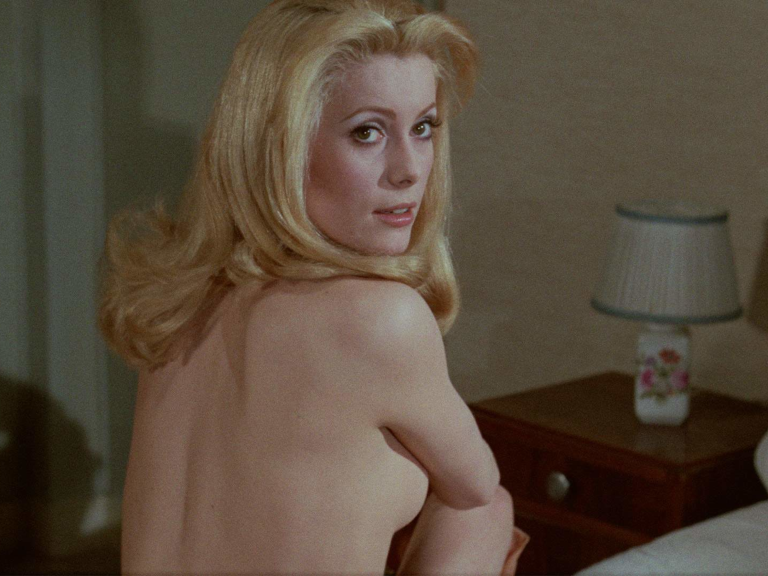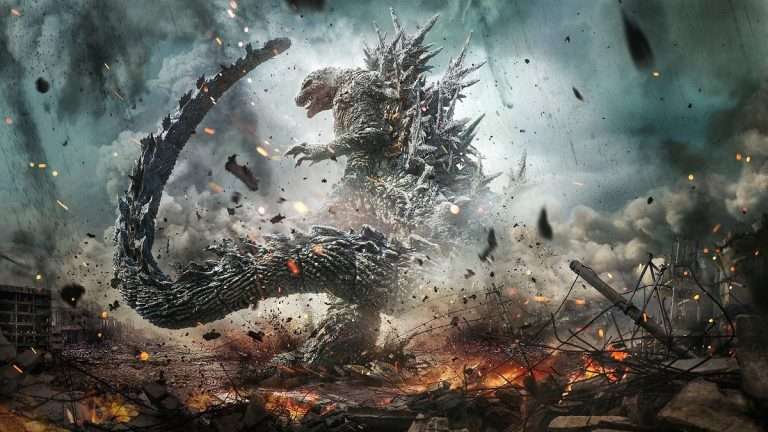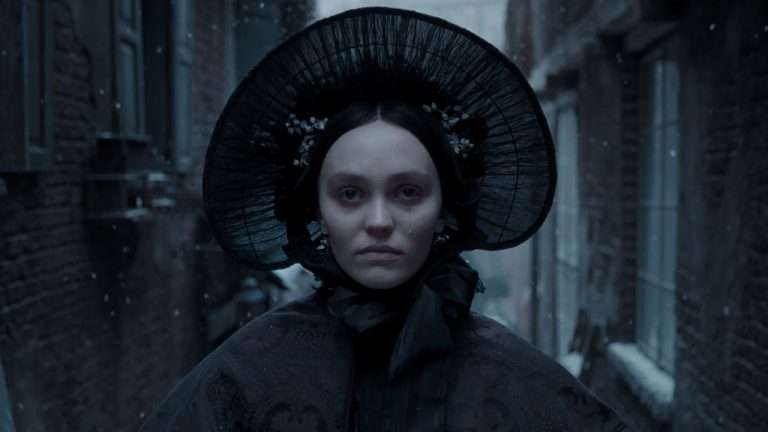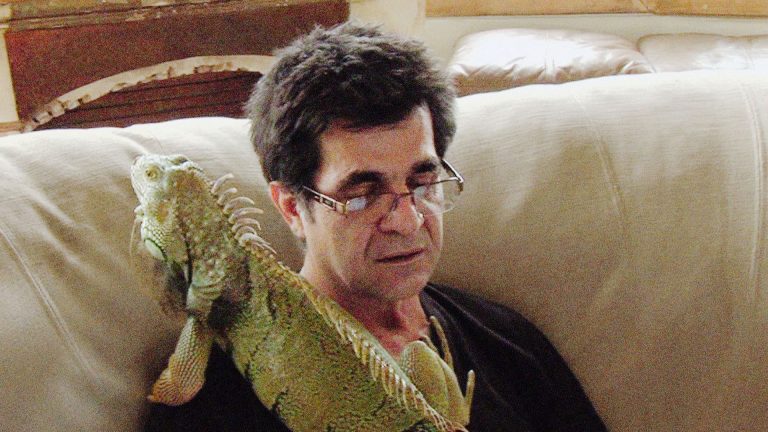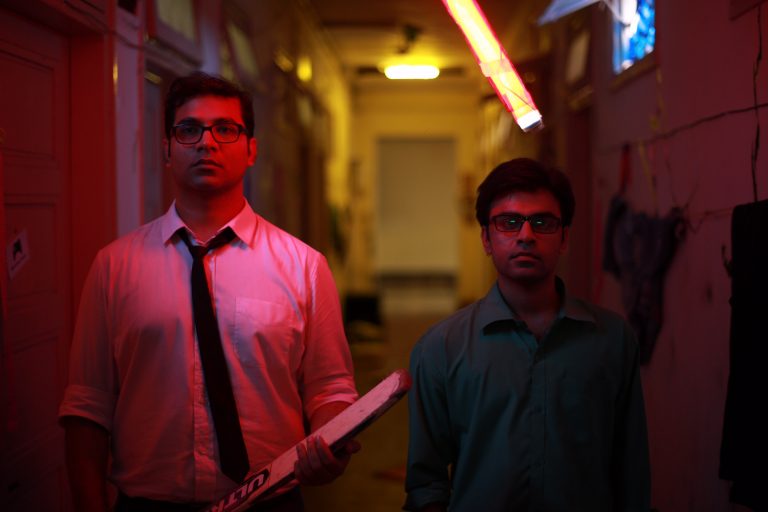Since the dawn of cinema, Western has been one of the most sought-out genres. The 11-minute film, The Great Train Robbery, introduced the Western to American audiences in 1903. Soon, Westerns became one of the most prevalent representations of American cinema. And why wouldn’t it be? The taming of the Old West is one of the best examples of American Yankee ingenuity (as long as you don’t think too hard about the Native Americans).
The wide-open vistas of the West are a cinematographer’s dream, and who can resist staging a good gunfight? There’s no doubt the classic Western can feel quaint by today’s standards: The typical Western gunfight didn’t involve high body counts (until Sam Peckinpah and Sergio Leone came along and infused a little more blood lust into the genre) or high-tech weapons. But those are called real stakes.
Now, here are ten films that showcase different stages of this genre and their climatic showdowns:
Recommended Read: The 15 Best Westerns of the 21st Century
High Noon (1952)- The Main Street Shootout
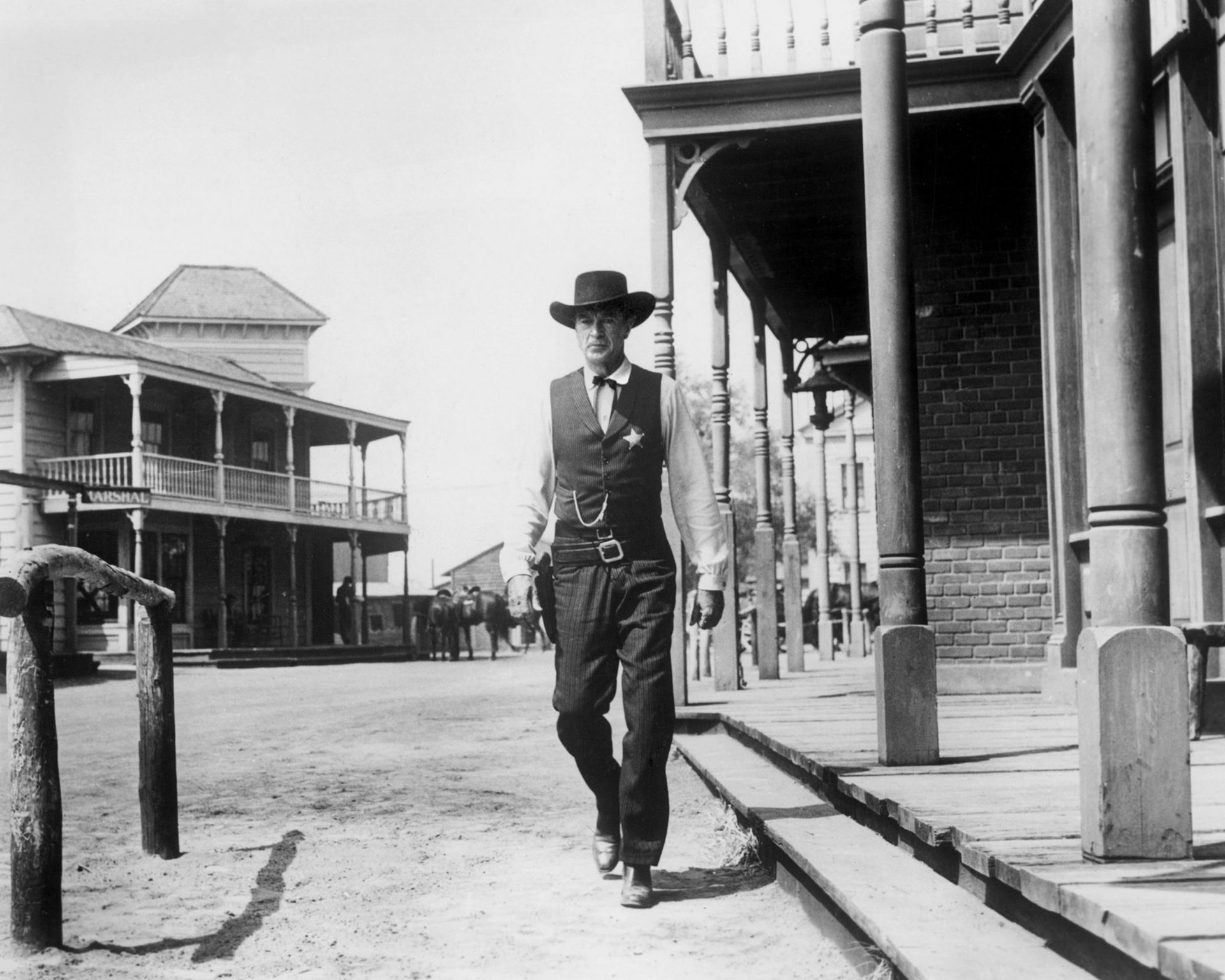
When people think of the classic scene of the Western where the sheriff and the outlaw walk towards each other down the middle of Main Street, they’re likely referencing Fred Zinnemann’s McCarthy-Era classic High Noon. As Frank Miller (Ian MacDonald) is released from prison, his cohorts assemble and walk toward town. From the opposite direction, Will Kane (Gary Cooper) slowly walks toward them as the camera pulls away from a high angle to highlight his solitary nature.
The camera cuts to one of the outlaws smashing through a store window, giving a now-hiding Kane a chance to identify their whereabouts. He soon surprises them, shouts their name, and kills Miller’s brother. Three down, one to go. The action is interspersed with Kane’s bride, Amy (Grace Kelly), changing her mind about leaving town and returning to support her groom.
Under heavy fire, Kane runs into a horse stable and picks off another outlaw. Frank then sets the stable barn on fire in an effort to smoke out the marshall. As Kane escapes, he suffers a shot to the arm.
Unable to keep up with his arm, the two villains try to corner him and almost have him when one of them is shot in the back. The camera pulls out, revealing that Amy is sacrificing her pacifist principles to defend her husband. In the showdown, Frank grabs Amy and takes her hostage. Amy bites Frank and pulls away in a team effort while Kane gets one last shot.
The sequence is brilliantly shot and interspersed with the character development as Will Kane differentiates himself from his nemesis through his integrity. Moreover, Amy compromises her pacifist standards for the right reasons.
Related to Ten Best Western Showdowns: Johnny Guitar [1954] – An Extraordinary Mythical Western Classic
Shane (1953)- Wilson’s Showdown with Shane
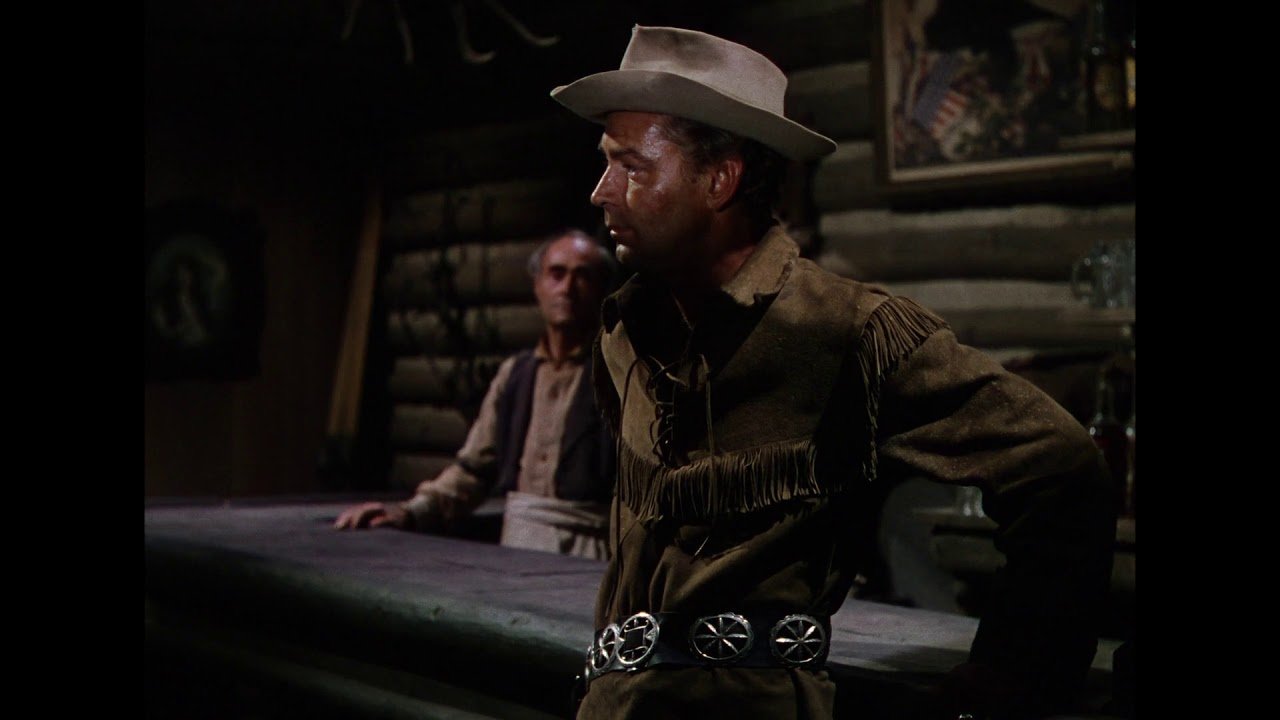
Ukrainian actor Jack Palance (born Volodymyr Palahniuk) might best be remembered for his Oscar-winning role in City Slickers. Still, he had been working in movies since just after World War II. In World War II, he was discharged due to severe burns suffered in combat. The upside was that 20th Century Fox saw his face and signed him to a contract because he could make a good heavy.
His crowning bad guy moment was from the classic Shane, where he played a hired hand which is simply menacing. Before facing off against the titular hero (Alan Ladd), Wilson engages in a duel with a townsman. Matching him stride for stride as he walks along the edge of a saloon porch. Sporting a smile, he taunts the poor man until he’s tempted to draw, at which point the poor man is gunned to death.
On the other hand, Shane and Wilson are familiar with each other, and when Shane walks into the saloon for their showdown, there’s professional respect between them.
As Shane walks into the bar as the orchestra completely drops out of the score, and Wilson and Shane acknowledge they’ve heard of each other. Shane pauses in a deafening silence and calls him a low-down Yankee liar before the two fire in a fraction of a second. Wilson barrels back, and Shane makes a crisp rotation to his left to knock down another henchman. Shane gets an assist from a young idolizer who warns him of the third gunman that Shane shoots down from the balcony.
Gunfight at the O.K. Corral (1957) – Heroes Are Made

The most famous gunfight in Western history–on October 26, 1881, in Tombstone, Arizona–was mythologized so heavily because of its most notorious survivor, Wyatt Earp. He became a film consultant in Hollywood in the 1910s and told tall tales about the event that got bent around whichever way each filmmaker saw fit. Besides, the real battle took 30 seconds with the gunfighting immersed in such a billowing of smoke that not even the people involved knew who shot who, so it isn’t particularly cinematic anyway.
John Struges’ version is possibly the most effective portrayal because the structure and match-ups of the shoot-out are well-connected to the hour and forty-five minutes that preceded it.
In addition to the resolve of the Earp brothers to defend their youngest, James (Martin Milner), the maverick Doc Holiday (Kirk Douglas) has a rivalry with Johnny Ringo (John Ireland) throughout the movie that spans multiple states in which Ringo tries to goad Holiday’s temper. When Holiday has open permission to shoot, there’s an upspringing of tension. Additionally, one of the movie’s most effective plot threads is Wyatt Earp (Burt Lancaster) trying to convince a young Billy Clanton (a not-yet-famous Dennis Hopper) away from following his outlaw brothers. As Wyatt tries talking him down, it’s an ending of a gun battle that resonates perfectly with who Wyatt Earp wishes he could be.
Gunfight at the O.K. Corral extends the sequence to five minutes in which people try to save one another, and heroes are made.
Related to Ten Best Western Showdowns – My Darling Clementine [1946]: An Iconic Western Lore
A Fistful of Dollars (1964)- The Stranger’s Plate of Metal
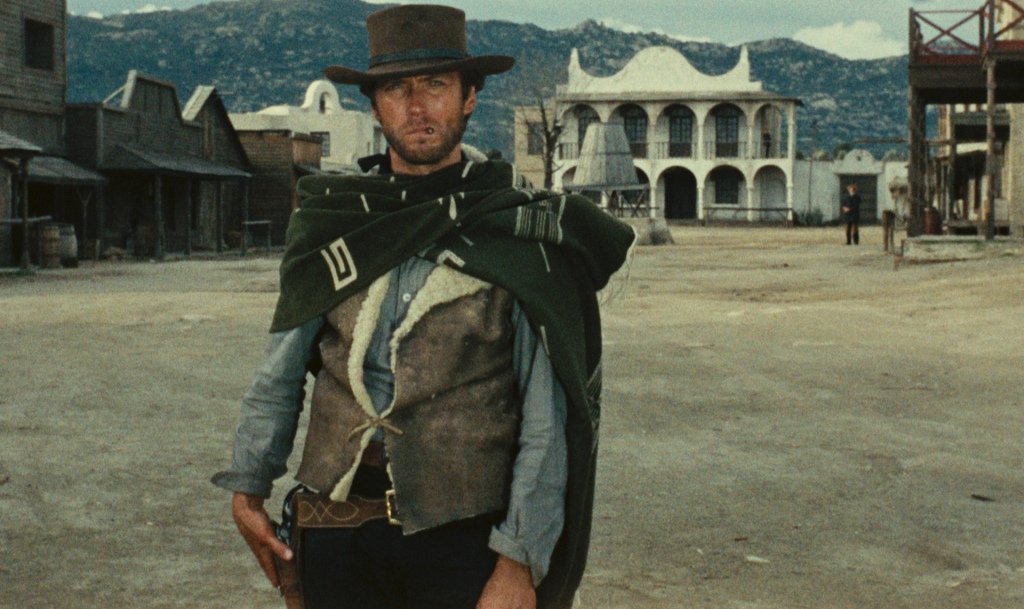
The union of Clint Eastwood and Sergio Leone was an unlikely one that propelled both to immortality. Eastwood was stagnating on the TV series Rawhide and wanted a bigger opportunity. Leone wanted to tell an epic story and felt he could replicate the success of others who’d shot Western in Europe. After a number of stars turned Leone down, Eastwood took the project not because he had faith in the script but because he had never been to Europe and wanted to travel.
True to late-form Westerns, The Stranger is a professional killer rather than a law-and-order man. He initially appears so far removed from morality that he’s willing to play two warring families off each other and cause slaughter among them simply to make a buck.
Part of the heart of the movie is discovering the touches of humanity in The Stranger’s Code. This all culminates in the final shootout, where The Stranger returns to rescue the man who ratted him out from torture against the sadistic head of the Rojo clan, Ramon.
Shot from Ramon’s point of view, The Stranger creeps toward Ramon and his henchmen and goads Ramon into shooting at him. He tells him to aim for his heart. With each shot, the Stranger falls back in recoil but gets up and keeps going. As Ramon is bewildered, The Stranger reveals a metal plate, and after a wonderfully tense pause, The Stranger rapidly gets off half a dozen shots in the blink of an eye to shoot down Ramon’s men.
After a minute of the two men walking in parallel, the camera cuts to a shot of just their eyes, and then The Stranger waits for the draw and strikes.
McCabe & Mrs. Miller (1971)- The Battle in the Snow
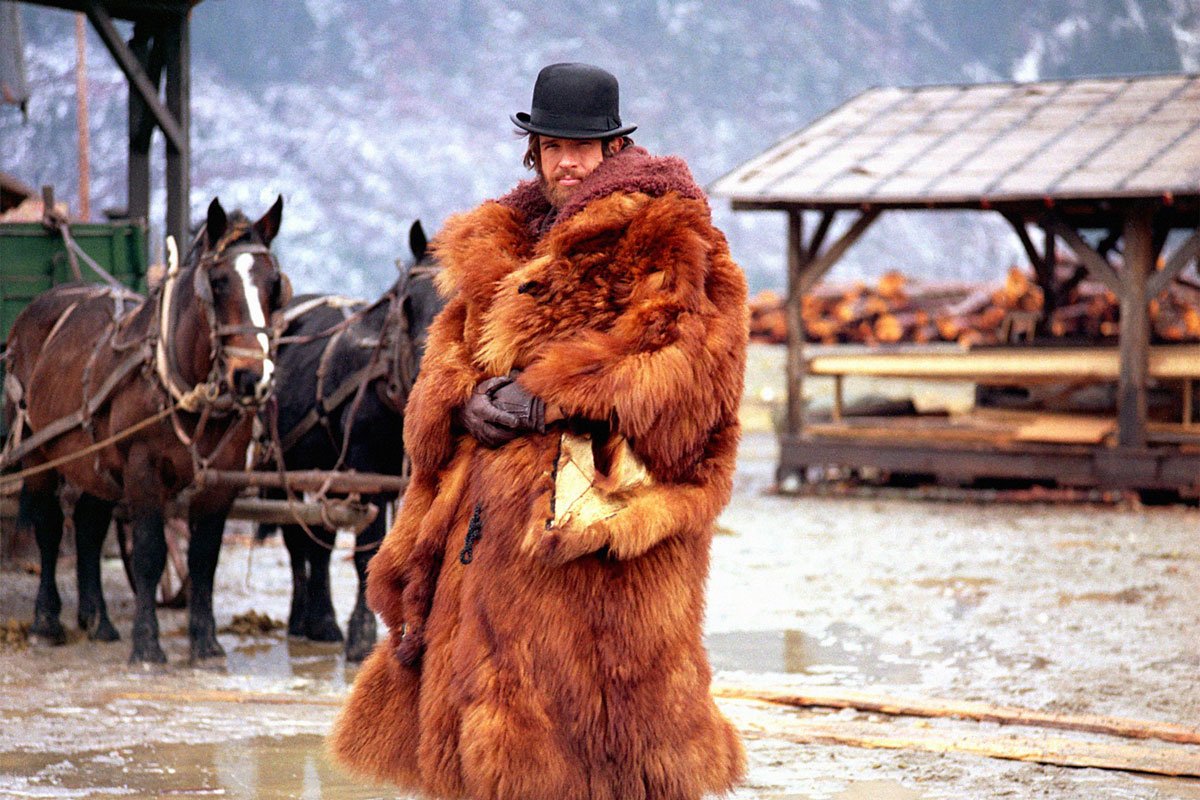
Robert Altman’s revisionist Western turns the genre upside down. Rather than open vistas, the film takes place in a rain-soaked corner of Oregon. Similarly, the titular hero (Warren Beatty) and leading lady (Julie Christie) aren’t out to tame the land but make a quick buck by running a brothel. Everything, including sex, is governed by ruthless, impersonal capitalism. Like other Westerns that pit big business interests against the little guy, a mining company seeks to buy McCabe’s holdings and sends a trio of hitmen when he declines. They send out three goons to dispatch the disheveled McCabe in the dead of winter.
The final confrontation doesn’t display a hero but a man willing to duck and dodge until he gets a sizeable advantage. He kills one of the outlaws in the back and dispatches another like a sniper shooter through a store window. It’s not a fast-paced shoot-out but a surreal one set across a snow-laden landscape with deafening silence.
As he downs the final gunman, the weakening McCabe attempts to make his way back but his gunshots and the cold get too much of him. The town’s residents are focused on putting out a fire in the church (which they would likely never use), and Mrs. Miller lies on her bed in an opium haze. Thus, the man who saved the town is destined to be forgotten.
Similar to Ten Best Western Showdowns: 20 Best Hollywood Movies with an Ensemble Cast
The Shootist (1976)- Going Out in One Last Bang

The last Western John Wayne ever shot fittingly deals with the question of old age as his character, JB Books, deals with cancer.
On the last morning of his life, Books rides the trolley to a hotel where three outlaws congregate. En route, he gives the trolley driver a keepsake and compliments a pretty girl. He then walks into a hotel saloon with the dignity of a man who’s made peace with himself. Jump cuts with the three outlaws elevate the tension as Books slowly pours himself a drink. Books spot one of the men in the mirror and raise a glass to him.
Within 10 seconds, another of the outlaws grabs his gun, and the fight is on. Books dive over the bar and take refuge. He throws a bottle to misdirect and gets him cold. His second foe gets a shot off and charges at him with a table which Books shoots through. He manages to get the best of the last gunman by playing dead and shooting him between the eyes as he peers over.
As Books gets back to his feet, he’s shot by the bartender as his protégé Gillum (Ron Howard) shouts in vain to warn him. Gillum, who’s been idolizing the gunslinger myth, shoots the bartender but learns the lesson firsthand of the lifestyle’s frivolity. Meanwhile, Books got the ending he always wished for: to go out with a bang.
Unforgiven (1992)- The Old Killer Returns
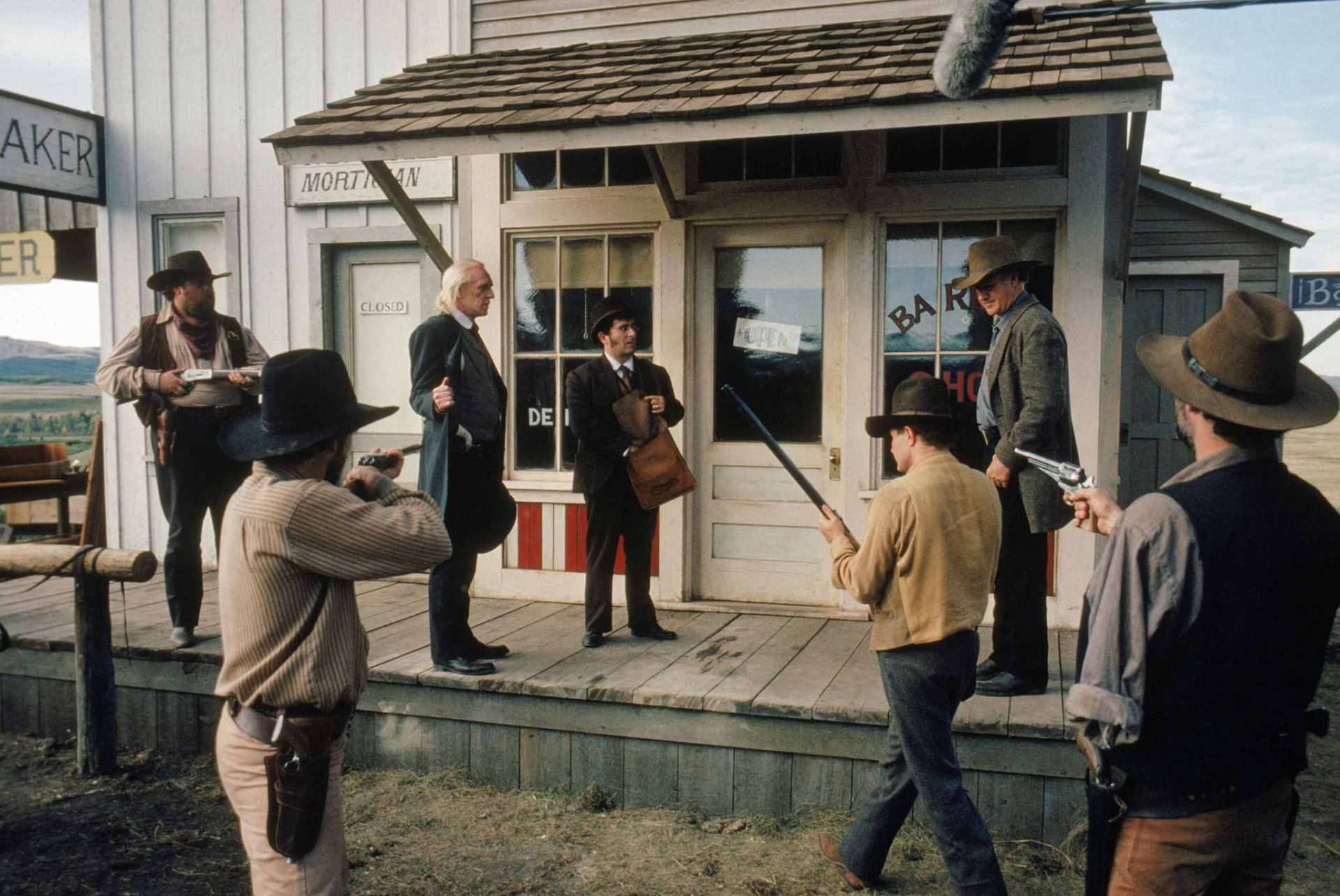
In a commentary on past roles, Eastwood plays aged gunslinger William Munny, who reflects upon his reputation as a “killer of women and children.” His journey to redemption is to avenge a horrifically maimed prostitute.
When his other partner (Morgan Freeman) is killed, and his dead body is displayed in the center of the town, William Munny transforms into his raging former self for the film’s climax. Munny enters the saloon where the corrupt sheriff Bill Daggett (Gene Hackman) and his deputies are stationed as the crowd falls silent, leaving nothing but the rain from outside.
Munny asks who owns the place and shoots the proprietor before he has a chance to clear out. When Daggett calls him a coward for shooting an unarmed man and brings up his murderous past, Munny admits to it and raises the stakes by declaring his intention to kill Daggett.
The methodical Daggett calculates that Munny doesn’t have enough bullets to kill them all and tells his deputies to keep their guns on him. Munny shoots anyway but nothing discharges. The over-confident Daggett smiles, “Misfire,” but in the blink of an eye, Munny gets another gun out and shoots up the room leaving just a couple of survivors.
He warns everyone to give his friend a proper burial and stay away from the prostitutes. Subsequently, he puts Daggett out of his misery before saying whether someone deserves to die has nothing to do with fairness.
3:10 to Yuma (2007)- Getting His Charge to the Train
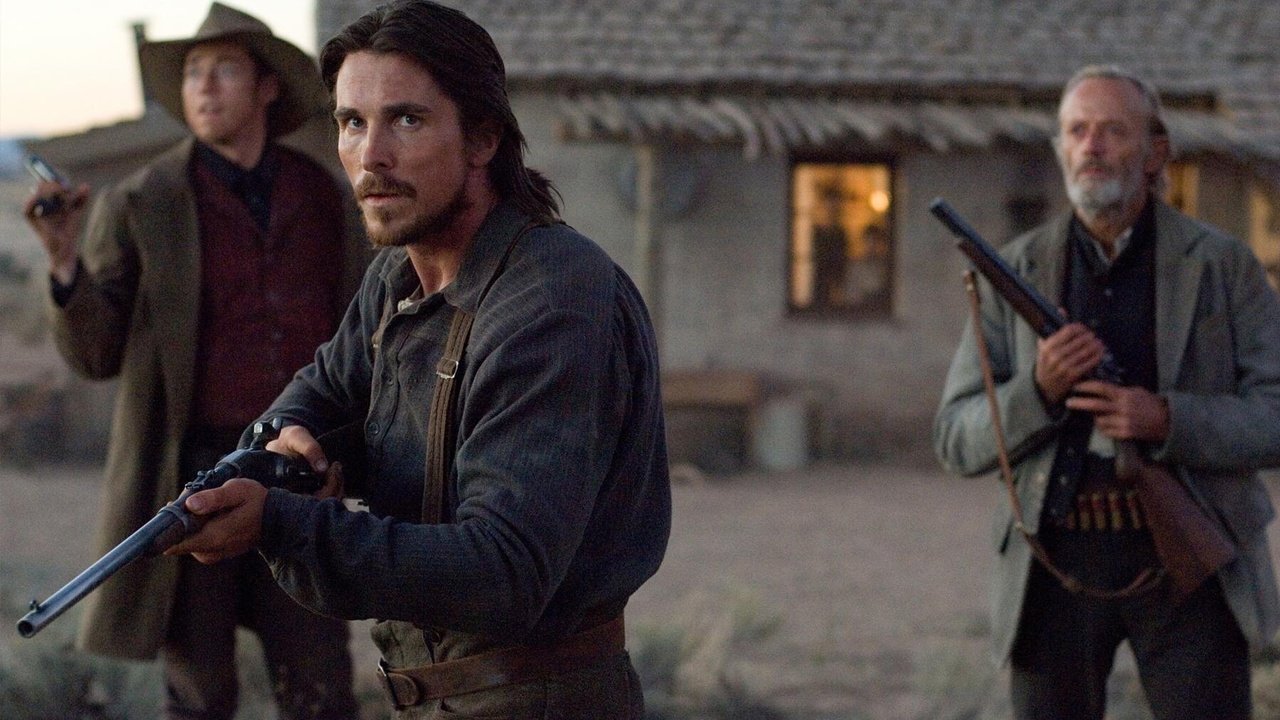
By the 2000s, special effects were so dependent on computer-generated imagery (or CGI) that the Oscar for Best Visual Effects went to “Golden Compass” for 2007 in a film that was pretty much entirely computer-matted. Transformers, the highest-grossing non-sequel of that year, was another testament to CGI excess.
That’s why it was refreshing to watch James Mangold’s remake that same year and see traditional gun fighting with real sets and props.
As the title explains, a small-time rancher, Dan Evans (Christian Bale), agrees to hold down outlaw Ben Wade (Russell Crowe) and get him on a Yuma-bound train to collect the bounty. Now Dan has to get his charge through a territory controlled by the outlaw’s posse, which creates an extra element of lateral movement. The pair runs atop roofs, crawls underneath saloons, and bounces off surfaces, and the acrobatics are all the more impressive, considering they’re handcuffed. Wade’s right-hand man (Ben Foster), Prince, also adds a level of cross-fire as he shoots down ranchers firing in the other direction.
In tune with modern action films, the film has a faster rate of cutting, but it keeps from being disorienting, and each shot is angled and set extraordinarily well. As Crowe and Bale are both giants, this sequence isn’t just about gunfighting but about the two dueling with one another dramatically. When they’re cornered, Evans tries convincing him to give up, while Wade moves Evans by confessing to his Civil War cowardice.
Similar to Ten Best Western Showdowns: Top 10 Action Scenes from the John Wick Franchise
Django Unchained (2012)-The Good-Faith Handshake
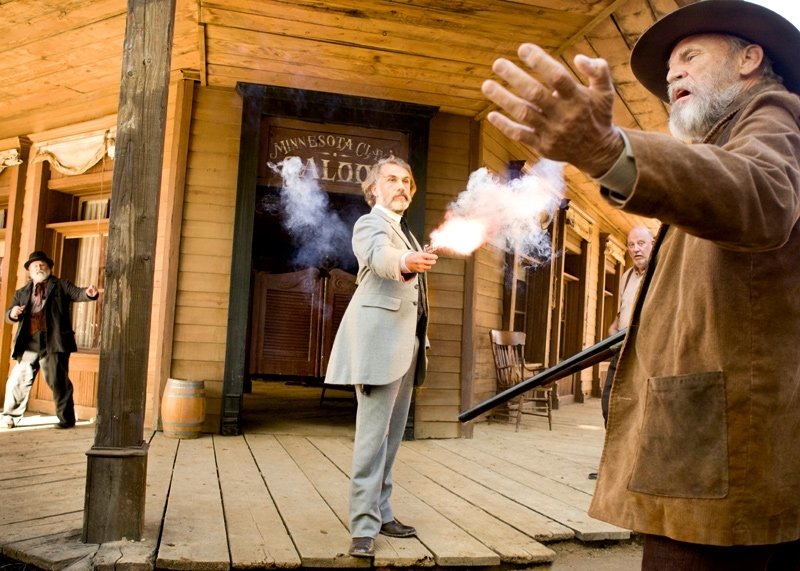
With outsized characters, stylized dialogue, and extra helpings of blood drenching his frames, Quentin Tarantino’s distinctive style did wonders for this genre in Django Unchained. A German bounty hunter, King Schultz (Christophe Waltz in an Oscar-winning performance), enlists an ex-slave (the titular Django, Jamie Foxx) in a routine recall that transforms into Django’s mission to liberate his wife Broomhilda (Kerry Washington).
Things go awry when Mr. Calvin Candie (Leonardo DiCaprio) is tipped about their plans and holds them at gunpoint to accept a higher price for her. Candie seeks to hammer the nail in the coffin of the humiliation ritual by requiring a good-faith handshake. After resisting, Schultz approaches Candie slowly, and as he reaches out his arm, a gun under his sleeve reveals itself.
In a split second, Candie is shot through his rose lapel. The action moves to slow-motion as Candie stumbles back against his bookshelf and globe (symbolizing his supposed refinement) with a stunned expression on his face and keels over. Waltz shrugs to Django, “I’m sorry I couldn’t resist.” As the action doubles to regular speed, people start falling like dominoes. Django (who has been trained by Schultz) has a coming-out party as a bona fide gunslinger by grabbing a gun from Schultz’s murderer, shooting him, and making his way out into the mansion’s living room, where he masterfully shoots down an incoming barrage.
The sequence plays with frame speed (gunshots are presented in slow motion while reaction shots occur at normal speed) and sound but loses a few points for the random infusion of rap in the score that’s just plain anachronistic.
Magnificent Seven (2016)- A Modern War Scene

Make no mistake, the classic version of “Magnificent Seven” (1960) should be prioritized above this remake for viewing. The film tells the story of seven mercenaries of different background banding together to help inexperienced townspeople defend their village from a robber baron’s army. John Sturges tells the tale beautifully, but the major gunfight is uninspired, splicing of clips of different people shooting and being shot. It doesn’t tell much of a story.
Antoine Fuqua’s version, on the other hand, is a master class in action. With the mercenaries and the townspeople lining up in trenches and formations, the sequence is staged more like something out of a war film than a simple Western. The film is also shot with the grandiosity of an epic, with immense panoramas gracing the long shots. The scene is filmed with such a definition that the dust trails of bullets can be traced through the air.
Aside from its stunning aesthetics, the sequence maintains the narrative at a careful pace. The spirit of the original was to showcase different men joining together to complement each other’s talents; this sequence highlights these differences. The Indian Red Harvest (Martin Sensmeier) uses a bow and arrow (admittedly stereotypical), Robicheaux (Ethan Hawke) is a stand-still shooter and military strategist, Faraday (Chris Pratt) boasts agility and a quick draw, and Rocks (Byung-hun Lee) is an ace with knives. Watching these gunslingers operate together is the same kind of thrill as watching superheroes carve out a concerted attack.

